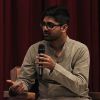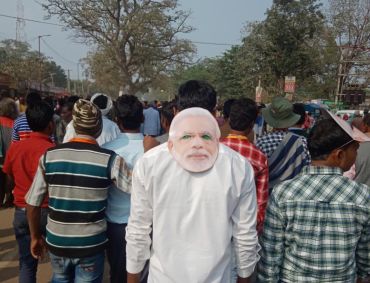From March 11 to 14, IIAS and the French Insitute of Pondicherry (IFP) co-hosted "Youth Cartographies," a methodologies workshop that brought thinkers from a range of disciplinary backgrounds to parse the environments that youth (aspire to) inhabit across diverse contexts.
Over the three days, participants shared their experience of engagement with youth in different socio-ecological and political contexts, whilst focusing on the variety of experiential techniques used with a special emphasis on cartography and embodied methodologies.

Participants of the Youth Cartographies workshop.
Anuj Daga (2024)
Presenters not only came from the diverse disciplines of social science, anthropology, literature and history, urban planning, architecture, visual and performing arts, environment, film making, political science or developmental studies, but also covered entire extents of Indian geography and beyond - namely Africa, Indonesia and China. Over about eight presentation sessions and intermediate round table discussions, the group discussed their methodological approaches and issues that are implicated in the questions of development and youth.
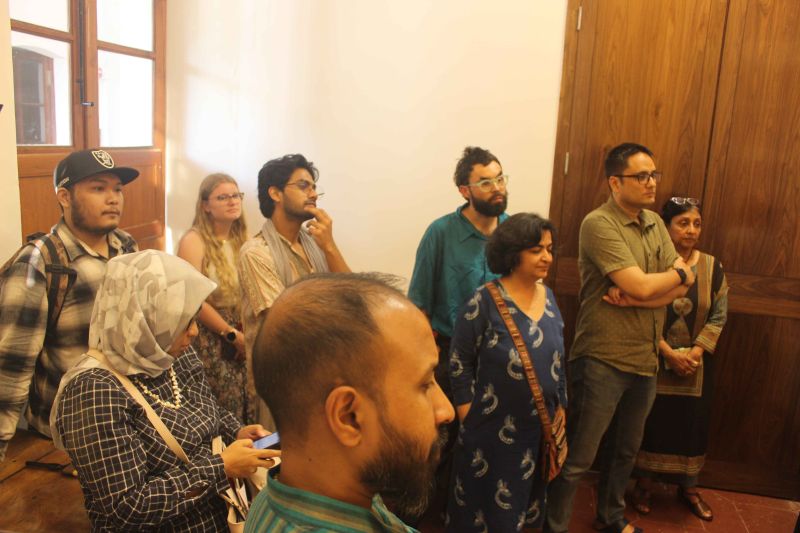
Anuj Daga (2024)
The first session discussed the way in which caste and community play a subversive role in the formation of youth identities within the state of Tamil Nadu in India. Through interpolating qualitative and quantitative data for government schools in Tamila Nadu, social scientist Anandhi S revealed how government schools, where 90 percent of children from scheduled and other backward classes enrol inevitably due to lack of access to expensive private schools, are important sites of caste politics. Her research showed that out of the 3000 students graduating hardly 150 to 200 students enrol for formal programmes. Bringing out how caste identities are strategically suppressed by the powerful privileged teaching groups, the question of mobility of caste becomes inherently difficult. Thus, she argued that merely providing infrastructure does not necessarily ensure social justice for the sustainable future of the youth. On the other hand, Baiju T, a PhD candidate at the IIT Madras presented his ongoing study of Youth in Kancheepuram - a small town 40 km south of Chennai. Through his ethnographic field work where employing art, storytelling and deep listening he understood the youth for whom the dealing with uncertainty and the might of committing crime feels heroic and valourous while security of life and regular jobs are disliked. While these may be labelled as criminals in the daylight, these young men are the people to turn for help during the dark. Friendship over the field work revealed a distinct human morality that could be missed by mainstream perspectives.
The second session dealt with questions of transforming physical geography of place and how they implicate the youth in its perception and manoeuvring. Here, IFP based Tamil Studies scholar Kannan M (re)oriented the participants to the built environment of Pondicherry by tracing its urban history through his vivid narration. He demonstrated how critical reflection on lived experience and personal witness may offer political grounds for urban imagination for the youth. Urban researcher Loraine Kennedy, along with Surya Nair presented their work on how economic politics shape youth mobilities and futures in urbanising Chennai. The development of IT industries and physical infrastructure under the policies of successive governments of Tamil Nadu have produced significant impacts in real estate, attracting the youth’s attention towards a possible economic and social mobility. Using geo spatial and social mapping, their research discusses the transformation of the Old Mahabalipuram road on Chennai’s peripheries into an IT Corridor that steers youth towards specific aspirations in shaping urban futures.
The third session looked squarely at film making and youth agencies that face marginalisation under recent government policies. R P Amudhan’s film ‘Being the other’ brings out the deep anxieties of a Muslim youth in Himachal Pradesh after the State’s aggressive assertion of the Citizenship Amendment Act passed by the Parliament of India on 11 December 2019. Sanjay Barnela’s ‘Thengapalli’ took the viewer into the forest-scape of Gunduribari village in Odisha where the young adivasi women and men have taken charge of patrolling their local village forest over day and night, for it is their principal source of sustenance and survival. Despite not being recognised by the Forest Rights Act 2006 of the Government of India, the adivasi youth group have devised strategies and practices of forest management of their 208 hectares of forestland after the neighbouring one was taken over for economic purposes. On the other hand, Kirnamanyi Indraganti opened up filming as a field of power and control and how releasing its navigation may allow the formation of a new audience.
In concluding Day 1, geographer Anu Sabhlok from ISSER Mohali presented her experiments in Abohar - a small town in Punjab, India, where she used Design as a prompt to synergise young minds towards reworking the image of the city. Sabhlok informed how, in 2020, Abohar was declared the third dirtiest town in India, which coaxed the local authorities to take action on the situation. The interdisciplinary research team deep-dived into the reasons of Abohar’s garbage issue to also realise its invisible interconnection with caste. The experimenting of a pedagogical design studio allowed the team to direct multilayered interactions and pluriversal interests in employing a landscape design strategy not only towards cleaning the city centre, but also to make it more socially inclusive.
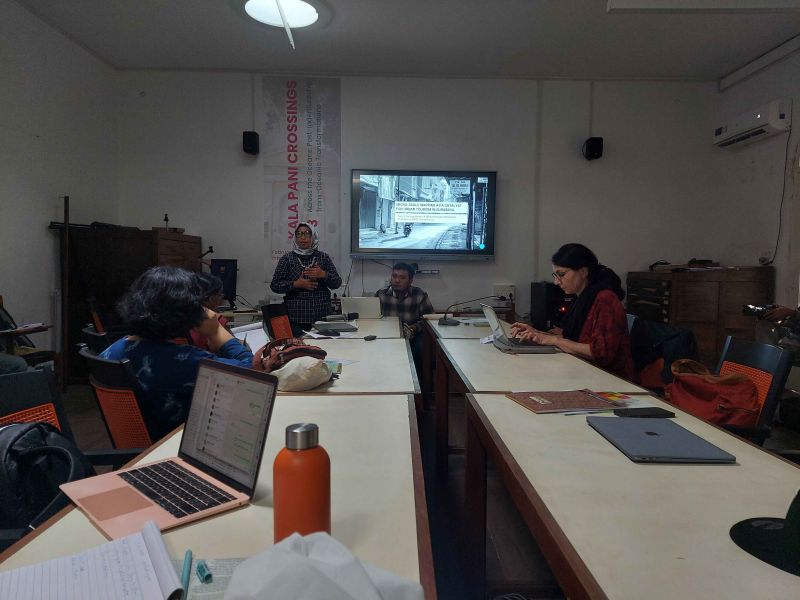
Anuj Daga (2024)
The first session of Day 2 opened with the understanding of working with youth in broader cross-national contexts through the methods of mapping, curating and performing. Lina Puryanti and Petrik Mahisa Akhtabi from Surabaya discussed the micro-scale mapping initiatives led by young cartographers to bring kampungs - the city’s traditional neighbourhoods into specific focus. Here, cartographic maps were layered with cultural specificities and intricacies of everyday life through on-field interactions with the community. Such map-making has not only impacted tourism, but also cultivated cultural exchange and the imperative of preserving heritage. Ying Cheng (online, China), Min Tang and Anuj Daga offered methodological reflection on their project ‘Youth on the Move’ that aims to nurture and build networks amongst urban scholars across Asia-Africa, to investigate Southern urbanities that youth produce on the move through short- and long-term mobilities in /across radically changing urban space. The team discussed their individual but interconnected modes of performance-mapping-curating underlying in the operation of such a project that allows for a form of ‘theory in practice’ where the researcher actively informs the field of study rather than treating it as a distant/docile archive.
The second session was a dialogue between youth aspiration and youth orientations as performed over a longer duration of time. Here, geographer and urban planner Rohit Negi from Ambedkar University in Delhi discussed transformations in small towns in Himachal Pradesh in the light of the close linkage of land politics and the nature of investments within the region. The research opened questions about how economic horizons of tourism compel urban youth to invest and invent future cartographies of Himalayan towns. On the other hand, scholar Debrati Bagchi locates the question of future writing contemporary alternative histories that appeal to young adults. In the wake of debates over public history that has resurfaced in today’s polarising world, Bagchi and her team aimed to sensitise the young reader to the act of historiography itself. Her presentation emphasised how history-writing could be a crucial tool in recognizing ways in which one imagines one’s cultural geography.
The next three sessions until the next day were focused on close understanding of sensitive ecologies and youth entanglements. Julien Andrieu’s geomatic analysis highlighted spatiotemporal changes occurring within mangrove habitats around Pichavaram Mangrove Forest in Tamil Nadu which makes the coastal communities vulnerable. Faisal Rahman and Ranjani Prasad, researchers at the People and Nature Collectives at Keystone Foundation, in Kotagiri in Nilgiris spoke of the cultural mapping work being taken up by the community youth within the Nilgiris towards forming an indigenous cartography, which they asserted, must also be about indigenous data sovereignty. Their presentation opened up the map as a site for social justice, and thinking of recognizing forest identities along with their institutional validation. They argued how mapping and archiving may enable community resource initiatives as well as articulate land rights for the community. The IFP artists in residence at IFP for the ‘Travelling Plants' exhibition discussed different methods through which they approach environmental questions beyond their colonial framing.
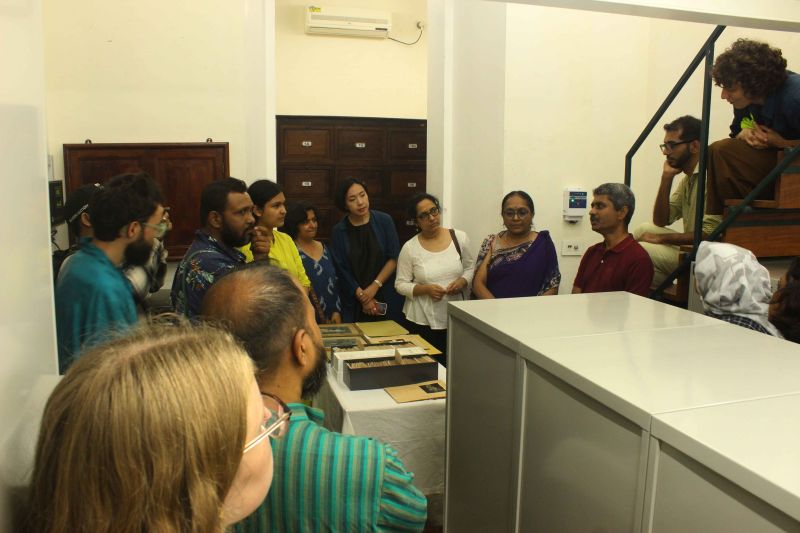
Anuj Daga (2024)
In summary, the learnings of Youth Cartographies methodologies workshop can be processed on two fronts. On the one hand, the consortium charted a broad landscape of the diverse practices that young people employ in order to reconcile their fast transforming environments. On the other hand, it exposed participants to numerous methods that research employs in connecting and understanding the aspirations and orientations of the youth or their environment. In doing so, the workshop brought various scales of observation through which we generate knowledge, from the microbial to the geospatial. It offered a chance to consider how inward looking or outward looking certain research methods are, and how they impact the way in which we intervene into the youth lives we work with. The interdisciplinary interaction pushes us to investigate into how we think of our respective positionalities through the research forms that we engage with, and how do they mirror youth worlds? Lastly, while the workshop brought a wide diversity of youth cartographies, it also demanded for ways in which the multiplicity of voices within a given discipline may be surfaced. It foregrounded that collaborations could also be a way of acknowledging differences, and thinking through different forms through which we may engage more productively with audiences in the public domain.

